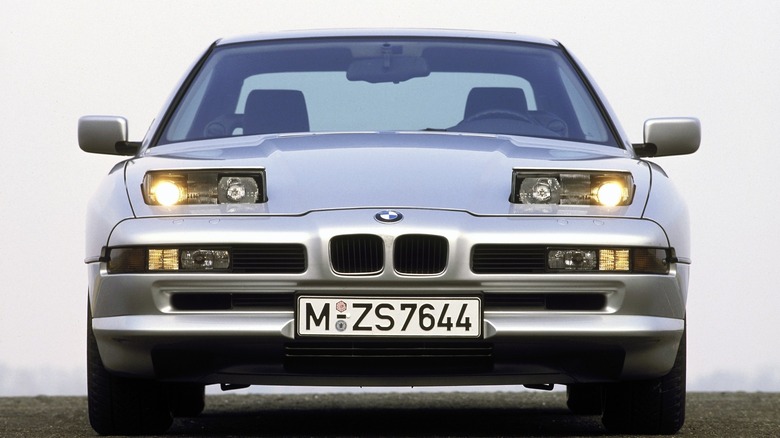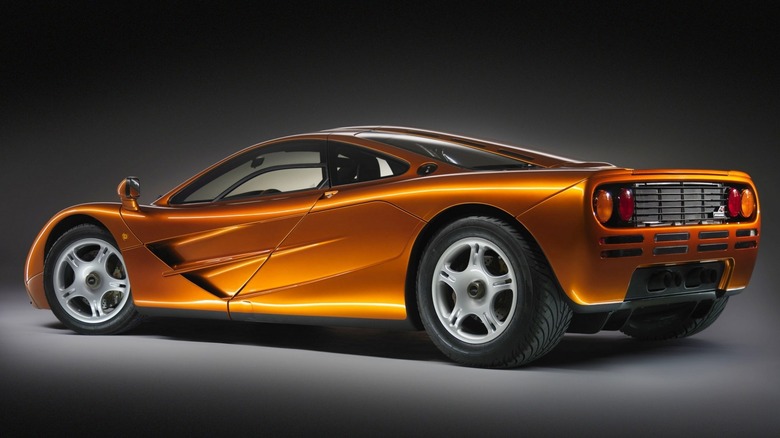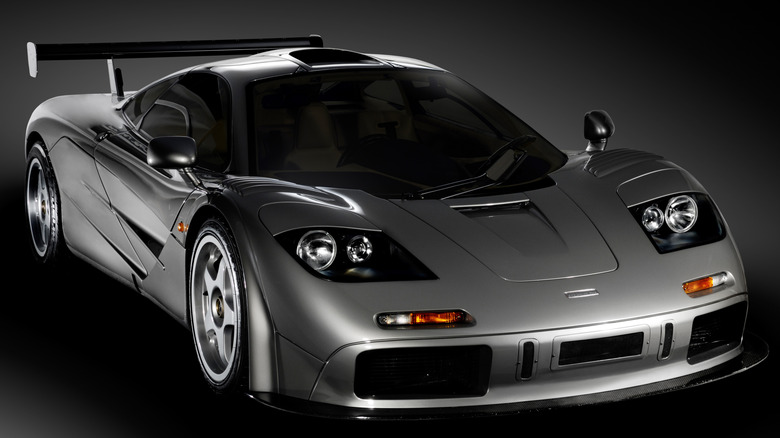One Of The Greatest Cars Of All Time Got Its Engine From This Often Overlooked BMW Platform
Back in the 1980s, BMW introduced the world to its second-generation 7-series: a large luxury sedan packed to the gills with technology. Unheard of at the time, the 7-series sported projector headlights, dual-zone climate control, and an adaptive suspension. There was also a list of options appropriate for the decade of excess, including a telephone, fax machine, and onboard wine cooler.
Needless to say, this flagship machine couldn't be powered by any ordinary engine, so BMW stuffed in a V12, internally dubbed the M70. The M70 was the first 12-cylinder ever to power a BMW, and the first in any German passenger car since World War II.
Utilizing all-aluminum construction with a displacement of 5.0 liters, the V12 was essentially two conventional BMW inline-six cylinders joined together at a 60-degree angle. While this arrangement sounds promising on paper, the engine was only capable of about 300 horsepower and 332 pound-feet of torque. That was respectable enough for the luxo-barge 750i sedan, but the V12 would also be tasked with powering BMW's new grand touring coupe — the 850i — which was introduced a few years later.
Sensing the need for more oomph, BMW turned the V12 over to their M (short for Motorsport) division for tweaking. One of the engines involved in the project made over 640 horsepower, but was never installed in a production vehicle. Rather, a still-impressive 375 horsepower version called the S70 was shoehorned under the hood of the 850CSi, a sporty trim level of the brand's 8-series coupe.
McLaren's first choice was actually Honda
Concurrent with the BMW Motorsports team of engineers working their magic to create the S70 engine, English automaker McLaren was developing its F1: a street legal supercar from a company which had previously only built full-blown race cars.
Since McLaren didn't have deep enough pockets to develop its own engine for the F1, it needed to pair up with an OEM for the powerplant. Initially declined by Honda — an avid player in Formula 1 racing — McLaren then approached BMW, where it was able to strike a deal for the desired V12.
Like BMW's mass-produced 5.0 liter V12, the McLaren engine was all-aluminum with a 60-degree angle between the cylinder banks, but the displacement grew to 6.1 liters. Besides being larger, the bespoke McLaren V12 — officially known as the S70/2 — also featured a dry sump oiling system, coil-on-plug ignition (common now, but a big deal at the time), and dual overhead cams in each cylinder head — as opposed to just one in BMW's S70.
No discussion of this motor would be complete without referencing its mailbox-size carbon-fiber intake manifold, which covers twelve individual butterfly throttle valves and 24 fuel injectors — two for each cylinder. The final product cranked out 618 horsepower and 479 pound-feet of torque, reportedly exceeding McLaren's expectations for the venture.
The F1 is still fast 30 years later
McLaren mid-mounted its V12 in an engine bay lined with pure gold to reflect heat, and paired it to a six-speed manual transmission. In a car that only weighs about 2,500 pounds due to the extensive use of carbon fiber and titanium, the F1 was blisteringly fast for the time. 0-60 MPH was accomplished in just 3.2 seconds, on its way to a terminal velocity of over 230 MPH.
Throughout the 1990s, McLaren produced only 106 examples of the F1 — with past and present owners including Elon Musk, George Harrison, Ralph Lauren, and Jay Leno.
Nowadays, there are now more than a dozen internal combustion engine cars which have broken the 3-second barrier for 0-60 MPH acceleration, including McLaren's own 720S and 750S. The fact that the F1 is even in the ballpark of performing like a modern supercar after 30 years of technological advances is a testament to just how good the BMW-derived engine was.


